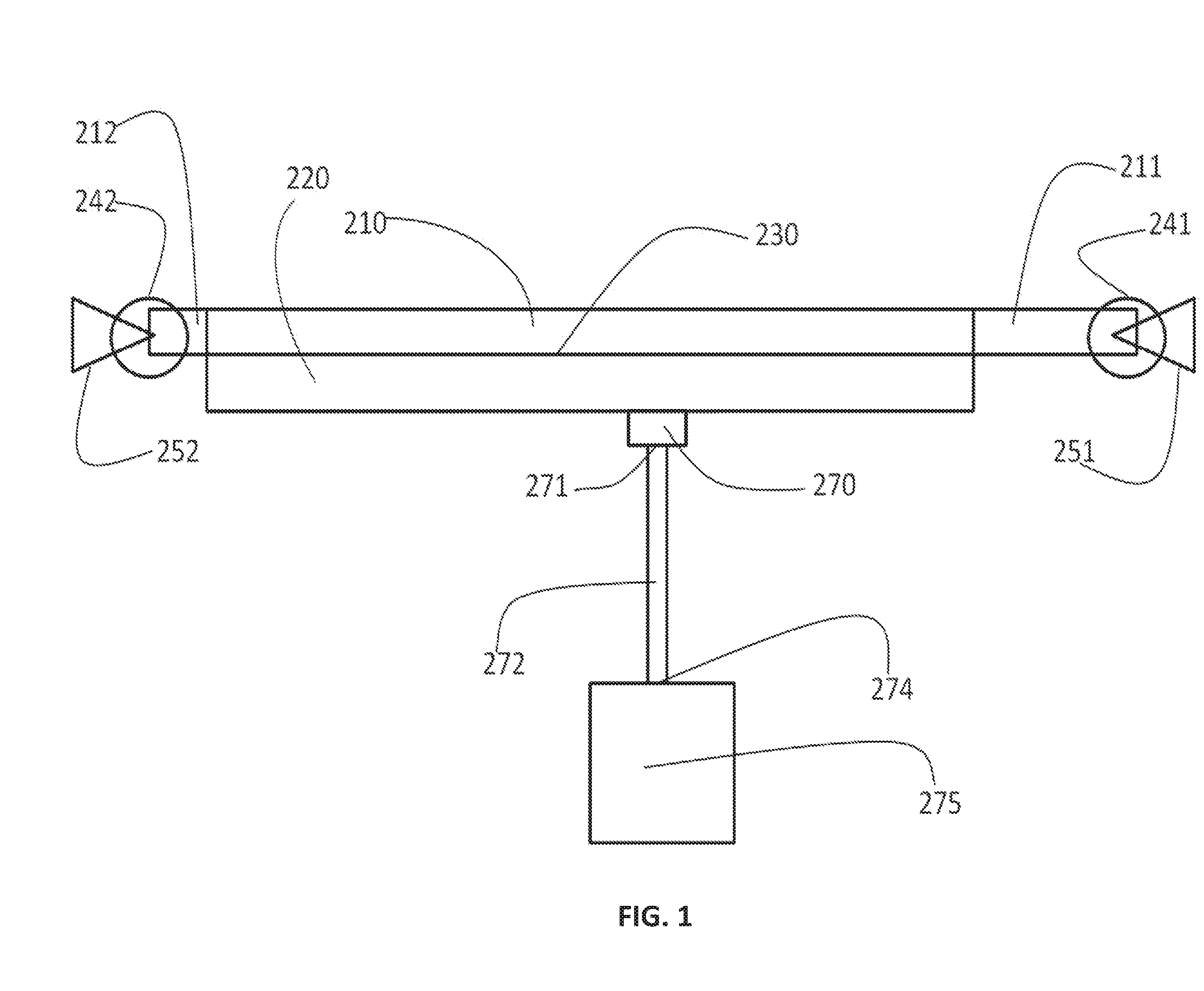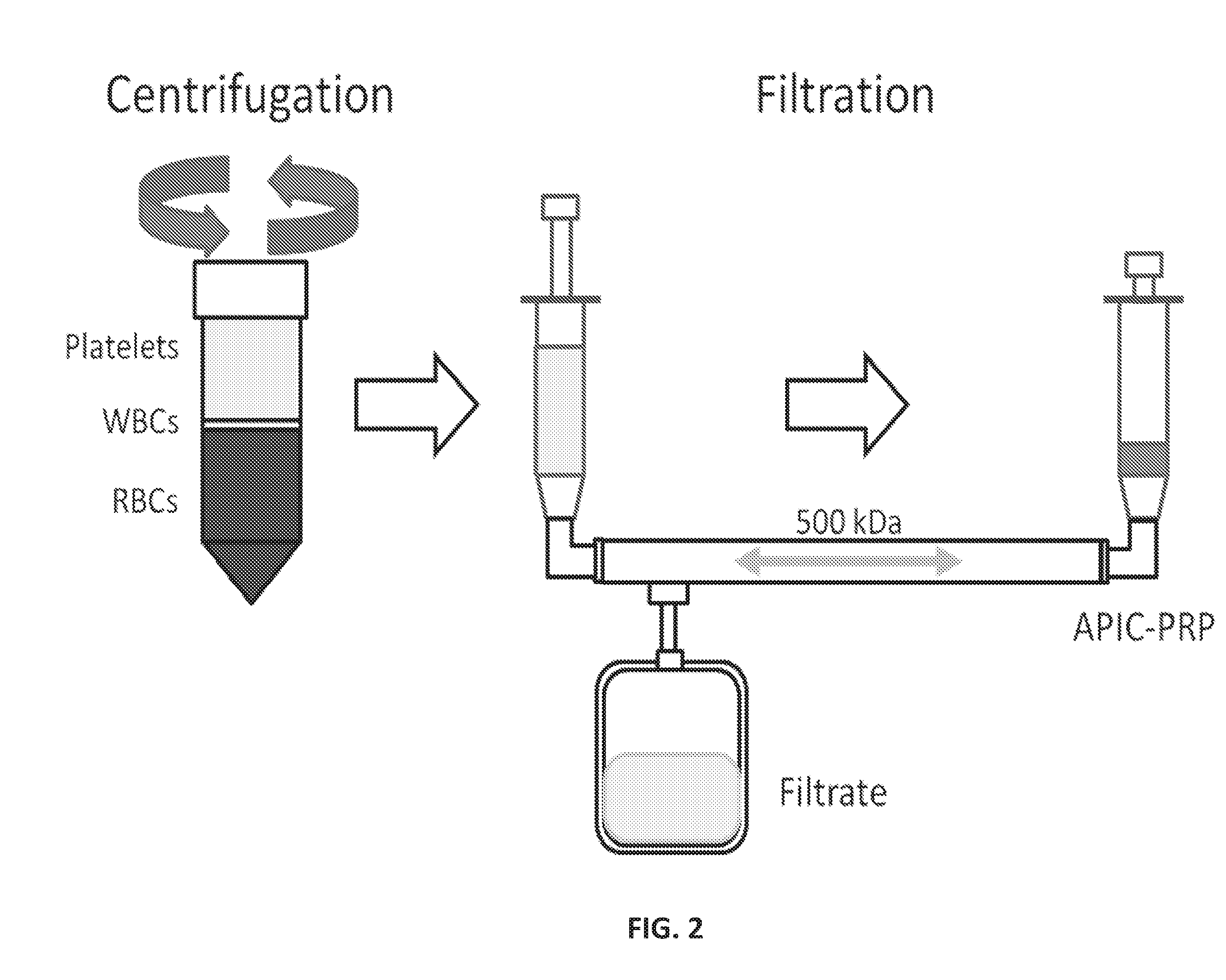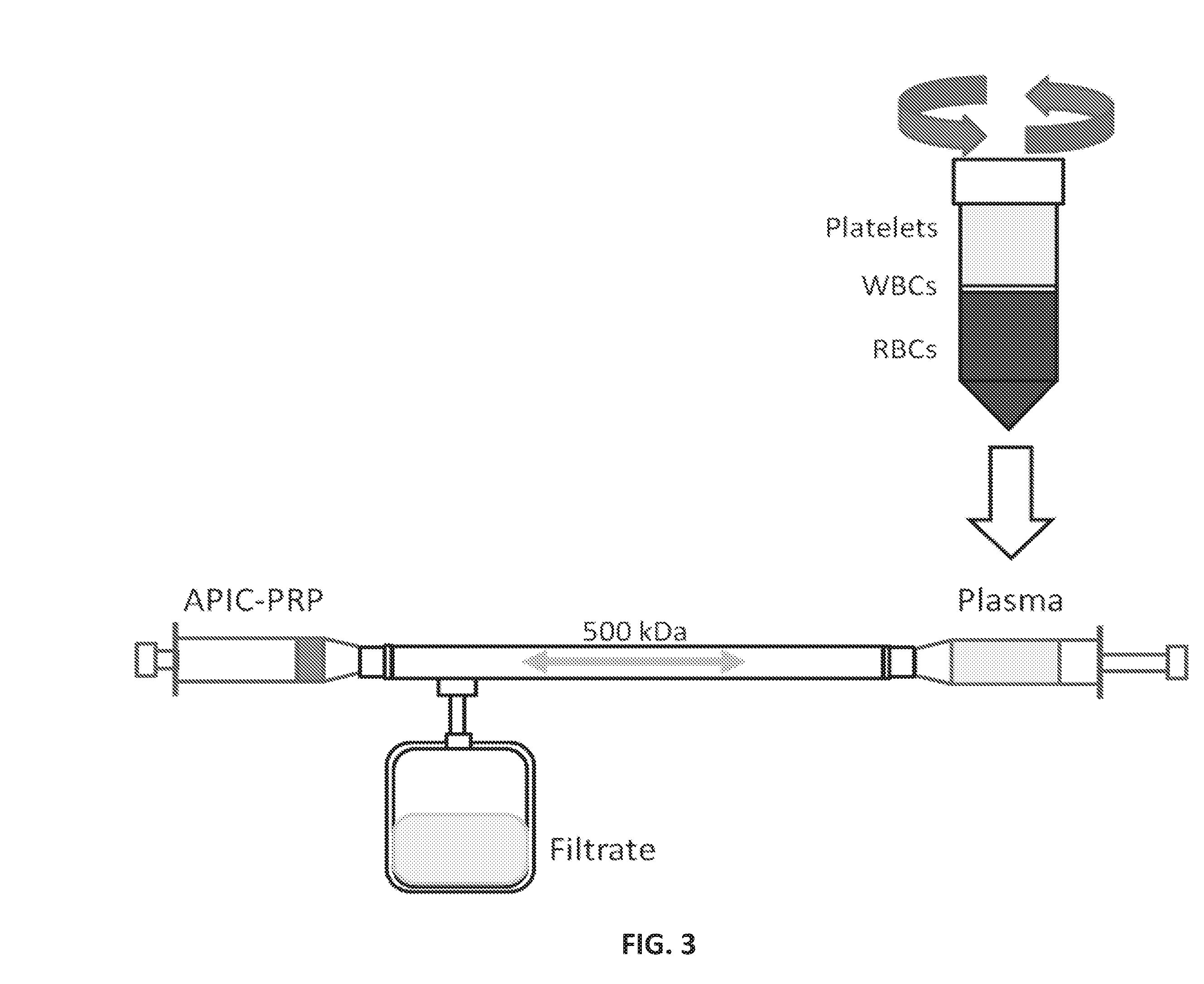Systems, compositions, and methods for transplantation and treating conditions
a technology of system and composition, applied in the field of systems, compositions, and methods for transplantation and treating conditions, can solve the problems of scar tissue level loss, failure of wound healing, and inability to completely regenerate the original tissue structure of the repaired tissue, so as to promote wound healing
- Summary
- Abstract
- Description
- Claims
- Application Information
AI Technical Summary
Benefits of technology
Problems solved by technology
Method used
Image
Examples
example 1
[0447]A study was conducted to define the cell composition and Alpha-2-Macroglobulin (A2M) concentrations of concentrated plasma products using different methods of production. Concentrated products were produced by[0448]1. pre-mixing RBC-reduced (RBC-R) PRP and PPP before filter concentration,[0449]2. post-mixing RBC-reduced PRP with filter concentrated PPP, or[0450]3. adapting a centrifuge for an Autologous Platelet Integrated Concentrate (APIC) 50 ml conical and filter-concentrating the PRP obtained.
[0451]Concentration was performed with each method using a Hemacor Polysulphone Hemaconcentrator Junior (APIC-HL HPH-Jr) or APIC-HH filter. The platelet, red blood cell, and white blood cells were counted in each product and their intermediates. A2M concentration was obtained by Enzyme-Linked Immunosorbent Assay (ELISA) for each product as well.
[0452]From the study, it was concluded that:[0453]1. Concentrated products made with the APIC-HH filter had higher concentrations of platelets...
example 2
Protocol
[0457]1. Autologous Blood Harvest[0458]a. Prepare a 60 ml syringes containing 7.5 ml sterile ACDA.[0459]b. Perform venipuncture and autologous blood harvest into syringes.[0460]c. Draw blood until a total volume of 50 ml is achieved. (42.5 ml blood+7.5 ml ACDA=48 ml Vf, 15% ACDA)[0461]i. Transfer 5 ml of WB+ACDA to a 10 ml falcon tube using a blunt-ended canula for later analysis.[0462]2. Production of Plasma[0463]a. Transfer the 45 ml whole blood+ACDA to a centrifuge tube using a blunt-ended canula. Careful that the centrifuge is balanced before spinning—you will need another centrifuge tube full of 47.7 ml water. The specific density of blood is ˜1.06.[0464]b. Centrifuge blood with the “PRP” setting (4 minutes, 1280×g, brake 3).[0465]c. Carefully remove the centrifuge tubes and place vertically in the tube holder.[0466]d. Attach a spinal needle to a 20 ml syringe and slowly draw 17.5 ml of plasma from about 1 cm above the buffy coat. Be careful not to draw up any of the bu...
example 3
[0489]Autologous blood harvest was performed by venipuncture according to present IRBs from healthy donors who were at least 18 years of age or older, healthy, over 110 lbs, and not pregnant. Three Patients donated 216 ml of whole blood mixed with 24 ml of Acid Citrate Dextrose Solution A (ACDA) anticoagulant (10%) for the preparation of APIC-2 PRP and PPP in conditions #1 and #2, and 76 ml of whole blood mixed with 14 ml of ACDA (15%) for #3, for a total blood donation of 292 ml anticoagulated blood. The anticoagulated blood was used as needed for the following examples.
PUM
 Login to View More
Login to View More Abstract
Description
Claims
Application Information
 Login to View More
Login to View More - R&D
- Intellectual Property
- Life Sciences
- Materials
- Tech Scout
- Unparalleled Data Quality
- Higher Quality Content
- 60% Fewer Hallucinations
Browse by: Latest US Patents, China's latest patents, Technical Efficacy Thesaurus, Application Domain, Technology Topic, Popular Technical Reports.
© 2025 PatSnap. All rights reserved.Legal|Privacy policy|Modern Slavery Act Transparency Statement|Sitemap|About US| Contact US: help@patsnap.com



